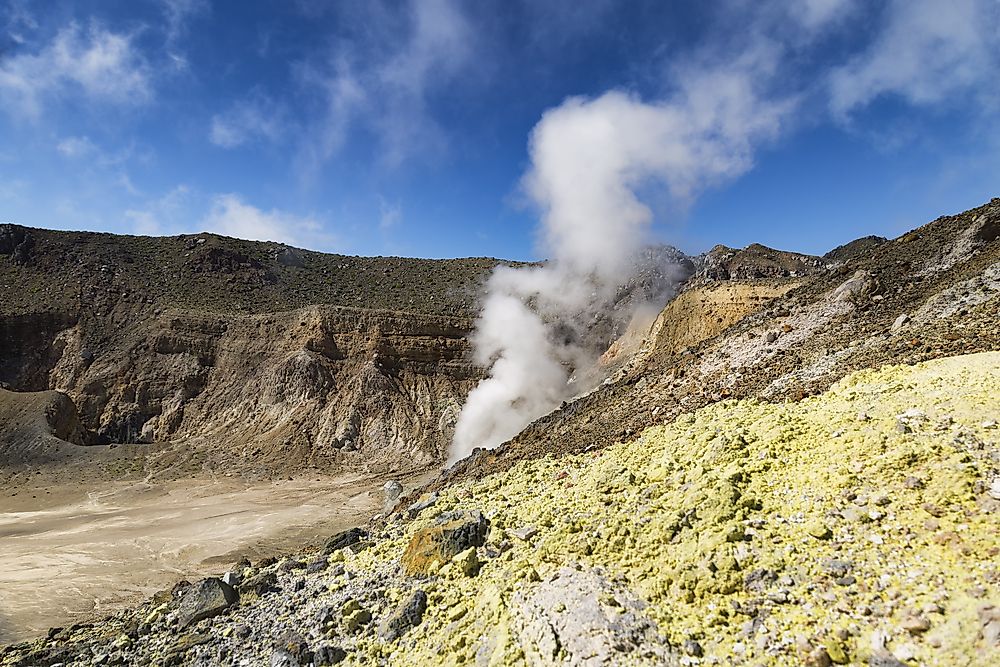What Is A Hydrothermal Vent?

Hydrothermal vents are volcanic fissures on the floor of the sea that release water heated by geothermal energy. Generally, hydrothermal vents are located in regions with active volcanoes and where tectonic plates are drifting apart. Hydrothermal deposits are rocks and mineral deposits thats are formed by hydrothermal vents. Additionally, hydrothermal vents can also form features such as white smokers or black smokers. Compared to other deep-sea regions, areas surrounding hydrothermal vents are more vibrant and productive biologically, as they can host complex communities of deepwater organisms that are supported by chemicals dissolved in the fluids within the vent. The base of the food chain in a hydrothermal ecosystem includes archaea and chemosynthetic bacteria, which in turn support other organisms such as shrimp, limpets, clams, and worms. Other celestial bodies, such as Enceladus and Europe, which are moons of Saturn and Jupiter, respectively, are believed to have active hydrothermal vents. Hydrothermal vents may also have existed on Mars.
Characteristics of Hydrothermal Vents
Hydrothermal vents in the deep ocean are formed along the mid-ocean ridges, which is where tectonic plates are drifting apart and forming new crust. The water that comes out of hydrothermal vents consists mainly of seawater that has been sucked into the system through faults and porous sediments or volcanic strata, as well as some magmatic water from magma. The source of most water in terrestrial hydrothermal vents is groundwater and meteoric water from the surface which has infiltrated into the hydrothermal system, and is circulated within geysers and fumaroles.
Distribution of Hydrothermal Vents
Hydrothermal vents tend to exist along the boundaries of Earth's plates, and in some instances also form in intraplate regions, like hotspot volcanoes. By 2009, there were approximately 500 identified submarine hydrothermal vents, and roughly half were actually observed on the seafloor. There are 11 biogeographic regions of hydrothermal vents: central East Pacific Rise province; northern East Pacific Rise province; southern East Pacific Rise province; East Scotia Ridge province; Mid-Atlantic Ridge province; Indian Ocean province; south of the Easter Microplate; and four provinces in the western Pacific Ocean.
Conservation of Hydrothermal Vents
The conservation of the unique and rare habitats of hydrothermal vents has been debated among oceanographers for decades. Additionally, some claim that scientists researching hydrothermal vents may actually be causing most of the damage. Numerous attempts have been made to develop agreements that guide how scientific research is conducted around hydrothermal vents, which have resulted in a general code of practice, but no binding international agreement has been achieved.











